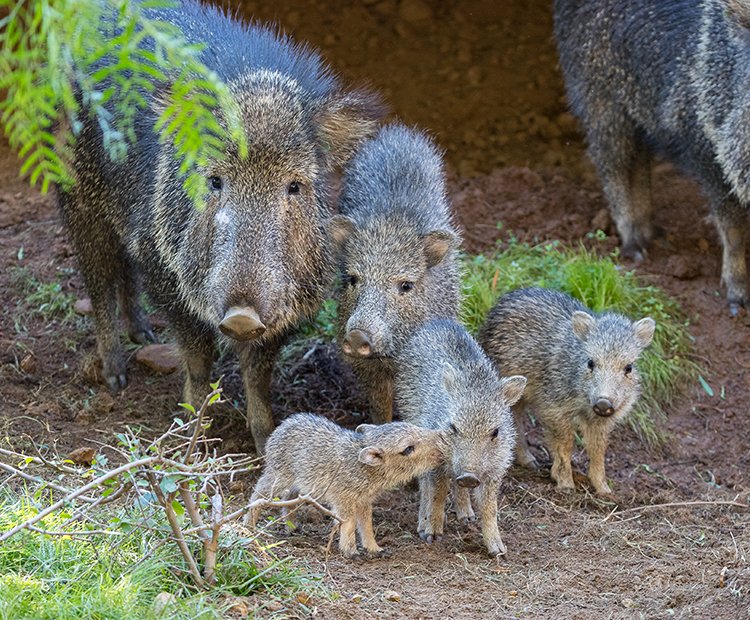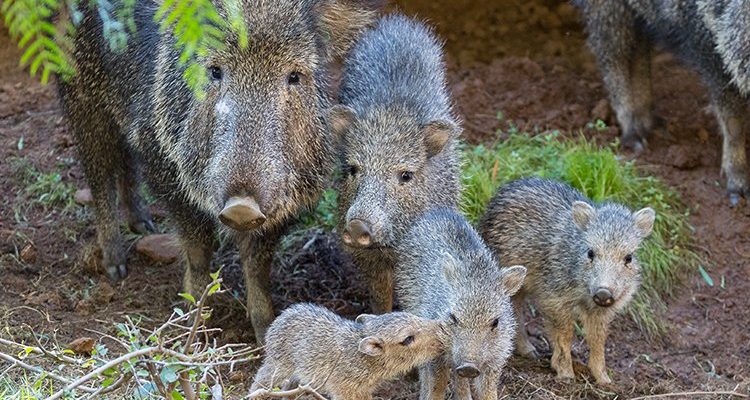
Peccaries might not be the first animals that come to mind when discussing ecological balance, but they hold significant influence. These social mammals roam across the Americas, from the deserts of the southwest U.S. to the lush forests of South America. Each peccary species has unique habits and roles, and understanding them helps us appreciate the delicate web of life they are part of. So, grab your favorite drink, sit back, and let’s explore how peccaries contribute to their ecosystems and why that matters.
What Are Peccaries?
First, let’s get a clear picture of what peccaries are. There are three main species of peccaries: the collared peccary, the white-lipped peccary, and the Chacoan peccary. They may look similar to domesticated pigs, but they belong to a different family altogether. Peccaries are more closely related to hippos than pigs!
Peccaries are generally around the size of a medium dog, with sturdy bodies covered in coarse hair. They have short legs and a snout that’s perfect for rooting around in the soil for food. You might catch them foraging for fruits, seeds, and roots, or even snuffling around for insects. Their social nature means they often travel in groups, which can range from a few to over a hundred individuals. This behavior not only helps them find food more efficiently but also provides safety in numbers.
The Peccary’s Role as a Seed Disperser
One of the key roles peccaries play in their ecosystem is seed dispersal. As they munch on fruits, they often swallow seeds whole. When it’s time for a digestive break, those seeds get passed through their system and deposited in a new location. It’s like nature’s little planting service!
This process helps maintain plant diversity in the areas where peccaries roam. The seeds they disperse can grow into new trees or plants, which in turn provides food and shelter for a variety of other wildlife. Imagine a forest where peccaries thrive; it’s likely a vibrant, flourishing ecosystem thanks to their habit of spreading seeds far and wide.
Peccaries as a Food Source
Now, let’s talk about food chains. Peccaries serve as an essential food source for various predators. Large cats, like jaguars, and birds of prey often hunt peccaries. This relationship illustrates the interconnectedness of species in an ecosystem.
When peccary populations are healthy, they provide a stable food source for these predators, which helps keep those populations in check. A balanced ecosystem relies on these natural checks and balances. If peccaries were to disappear, it could lead to overpopulation of their prey and a surge in plant consumption that might harm the habitat.
Soil Health and Ecosystem Engineers
Peccaries aren’t just hanging out in the forest—they’re also ecosystem engineers. Their foraging behavior has a big impact on soil health. As they dig through the ground, they aerate the soil, allowing air and water to penetrate more deeply. This process is vital for the roots of plants to access necessary nutrients and moisture.
Think of peccaries as nature’s gardeners. By turning over the soil and rooting out dead plant matter, they help create a richer environment for new plants to grow. Without them, soil might become compacted and less hospitable for various vegetation, leading to a decline in plant diversity and health.
The Impact of Peccary Decline
Unfortunately, peccaries face challenges like habitat loss, hunting, and environmental changes. As populations decline, the effects ripple through the ecosystem. Without peccaries to do their important jobs, seed dispersal decreases, soil health may suffer, and a host of other species might be affected.
Imagine a garden where the weeds grow rampant, and new flowers struggle to sprout. This scenario mirrors what might happen in a forest ecosystem if peccaries vanish. Fewer plants can mean fewer animals, and ultimately, a less diverse and resilient environment.
Conservation Efforts for Peccaries
To ensure that peccaries continue thriving in their ecosystems, conservation efforts are critical. Organizations and local communities are working on several fronts. This includes habitat preservation, regulating hunting practices, and raising awareness about the importance of peccaries.
You might be wondering, “How can I help?” Supporting local conservation initiatives, educating others about wildlife, and advocating for sustainable practices can all contribute to the protection of peccaries and their habitats. Every little bit counts!
Peccaries may not be the most well-known animals, but their role in ecosystems is undeniably crucial. From seed dispersers to soil aerators, these creatures contribute significantly to the health and diversity of the environments they inhabit. As we become more aware of their importance, we can take steps to protect them and ensure that they continue to flourish.
So, the next time you hear about peccaries, remember that their presence in nature is like the beating heart of an ecosystem—keeping everything alive and in rhythm. Protecting these amazing animals helps maintain the balance of life on our planet, and honestly, that’s something worth caring about.

